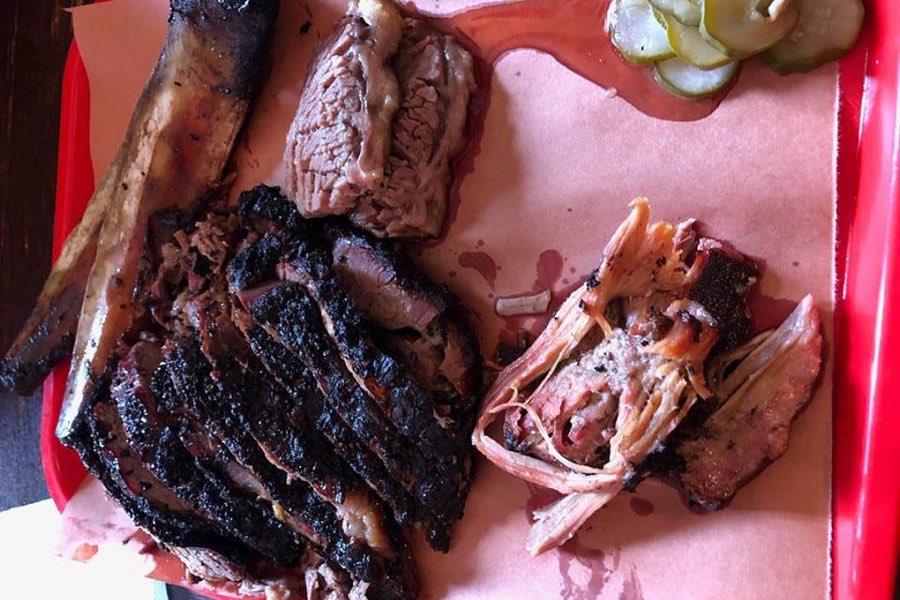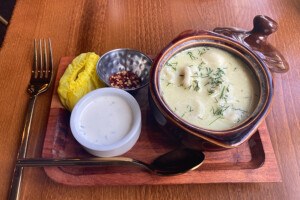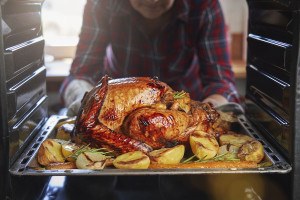Level Up Your Grilling Game With These Tips From Top Philly Chefs
Five of the city's professional grillmasters share their tips for firing perfect steaks, ribs, kabobs, and more — every time.
It’s grilling season — and as each weekend approaches, you daydream of presenting the perfect cut of flavorful, juicy meat with a side of charred-yet-snappy vegetables to your adoring friends and family … and then reality hits. That steak or pork loin you spent good money on comes off the grill carbonized on the outside and raw on the inside, or the cut you marinated for hours turns out tough and tasting like cardboard.
Just because summer’s already started doesn’t mean you can’t level up your grill game. We consulted with five Philly grilling experts — professional chefs who all rely on charcoal (sorry, propane proponents) to make tender, smoky ribs, char-kissed sate skewers, and juicy kabobs: Ange Branca of Saté Kampar, Mike Strauss of Mike’s BBQ, Chad Gelso of Suraya, Konstantinos Pitsillides of Kanella Grill, and Dominic Piperno of Hearthside. Here are their tips to improve your grilling game this summer.
View this post on Instagram
Choose your charcoal wisely.
A high-quality charcoal is the baseline for a successful grilling session, but every culture has its own way of perfecting the process. At Saté Kampar, Branca famously uses charcoal made from coconut shells, which burns cleaner and hotter than other types, to fire her sate skewers quickly so that they’re juicy on the inside and caramelized on the outside. (If you want to try it for yourself, she’ll sell you a bag.) And in Lebanese cuisine, wood is added to charcoal to boost flavor in grilled meats. At Suraya, Gelso soaks locally-sourced chopped wood in water, then lays it over the coals to build smoky aromas and flavors into each cut.
Don’t forget to pre-treat your meat.
Seasoning your meat in advance can be as simple as a shower of flaky sea salt. Piperno recommends sprinkling a “light snowfall” of salt onto your steak a few hours before cooking it, which will not only season but also tenderize the cut. “When you think you’ve salted the steak enough, salt more,” he says. When working with a whole fish like branzino, Pistillides seasons the cavity with just lemon slices, olive oil, sea salt, and fresh rosemary, then wraps the whole thing in Orlando brand grape leaves to keep the skin from burning or tearing on the grill.
If you’re looking to add bigger flavors to your meat, marinades and dry rubs are the way to go. To prep chicken, beef, and goat sate for the grill, Branca blends fresh ginger, turmeric, and shallot with earthy ground spices like cumin, coriander to mix with the raw meat. A few pinches of salt and sugar add depth and help with caramelization when the skewers hit the ripping hot grill. Bfore putting spare ribs on to smoke, Strauss dry-rubs them with a blend of brown sugar and salt, plus cumin, black pepper, and paprika in a 3:2:1 ratio. Got sauce? Wait until the last 45 minutes of cooking to slather it on.
View this post on Instagram
Temperature zones will help you cook meat evenly.
Strauss recommends turning your charcoal grill into a smoker by creating different temperature zones. “For example, keep the left side of the grill off or on low, and the right side on medium heat,” he says. Lay the ribs over the cold zone, close the cover, and let the indirect heat from the hot zone slowly cook the ribs.
This tactic works for ground meats, too. Suraya’s ground meat kebabs are delicate — Gelso seasons and preps them a day in advance to allow the meat to set — but temperature zones make them manageable. “Indirect cooking is king,” he says. First, lightly char the kebabs over direct heat for one minute per side, which will help hold the meat together. Then, rotate the kebabs into your grill’s cool zone and close the lid for about three minutes, finishing the kebabs with aromatic smoke.
Keep an eye on the clock, but trust your senses to get doneness just right.
Timing is everything on the grill, especially when working with delicate proteins like fish. While Pitsillides recommends ballparking cook time at 10 minutes per pound, he knows that whole fish is finished thanks to two indicators. Pull it off “when the eyes go white, and when you press the belly and it bounces back immediately,” the chef says.
When smoking ribs on your charcoal grill, Strauss recommends shooting for a temperature of 250oF to 275oF, which will give you ready-to-eat ribs in about three hours. But the tong test will show you when that rack is really done. “Pick the ribs up from the bone,” he says. “You should should see the meat just starting to separate from the bone.”
Piperno cooks his flat iron steak for about a minute per ounce — but he cautions that just because you’ve pulled the meat off the heat doesn’t mean it’s time to dig in. Be sure to let the food rest for 10 minutes to finish cooking and seal in juices before slicing and serving.



